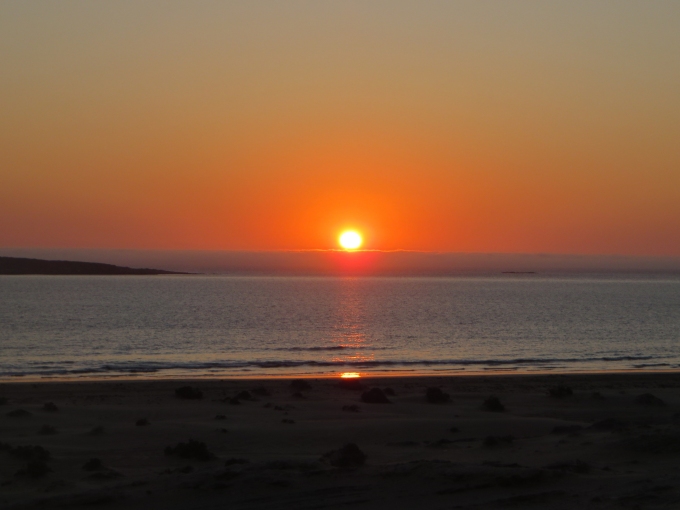On the Road to Aus...and back again
/The tiny town of Aus is only a few miles east of the wild horse herd and since we were in the neighborhood, we thought we'd drive a little further to check it out. The word “Aus” in German translates to “out”. But then, the Khoi-Khoi word translates to “place of the snakes”. Hmm … perhaps this really wasn't a place we wanted to visit? Ah, but we did.

Aus was an internment, “prisoner of war”, camp after the Germans surrendered to the South African troops in WWI. We traveled along a bumpy, gravel road to view the war memorial and the ruins of the site.
Ruins of the camp buildings built by the prisoners themselves were still visible. Crumbling foundations, rubble and detritus were all that remained of the site where 1550 German soldiers were held in captivity for four years (1915-1919).
Returning to the little town of Aus, we found that Aus isn't much at all. The tourist info office, which we'd heard good things about, was closed. There's a scenic little church, St. Theresa's, at the bottom of the hill by the railroad tracks. Aus is the end of the line for the train which primarily is used for ore movement.
Further up the road there are a few odd camping sites and a self-catering accommodation and then there is the Bahnhof Hotel. Truth be told, this was the reason we'd come to Aus. The Bahnhof Hotel restaurant offers a fine luncheon menu, but it is particularly well known for its sumptuous variety of cakes … and after all … it was David's birthday.
After a filling lunch followed by coffee and cake, we waddled to the car and started back for Lüderitz. We noticed the gravel road turn-off for Klein Aus Vista with a very inviting entrance and since we still had plenty of day left, we decided to do a bit of exploring. We hadn't gone far before a gate with a cattle guard stopped us. The sign just said to close the gate behind us. We continued on. What was the fence keeping in or out?
The circuitous road turned and twisted and dipped and finally straightened and stretched out with the desert all around us. Ostrich, wild horses, springbok and oryx all grazed peacefully together.
Up ahead in the distance, we saw a car … a very old, rusting hulk of a car … a 1934 Hudson Terraplane, to be exact. It seems there's an interesting story associated with this old car that goes something like this. The two thieves who owned the car stole diamonds from the Sperrgebiet (Forbidden Diamond Area) and were chased into canyon by the Diamond Detectives, who shot them dead. There are bullet holes in the car door to prove it. The diamonds, however, were never recovered. It is said that on moonlit nights, the thieves haunt the Geisterschlucht (Ghost Canyon) still hunting for their diamonds. No sign of ghosts or diamonds, but this car in the middle of nowhere was cool.
We could hear birds chirping nearby and finally figured it was coming from a huge sociable weaver nest in a camel thorn tree. I was somewhat tentative about standing directly underneath the nest considering the number of occupied weaver apartments above me. The birds quieted and were not at all sociable while I stood there. They were, however, most courteous and dropped no bombs while I photographed.
We retraced our track out of the canyon and as usual, saw things differently on the return trip. The expanse of desert seemed more vast from this perspective. A beautiful gabar goshawk patiently stood sentry, perched high in a tree ready to swoop down for an afternoon munch if the opportunity presented itself.
We saw an albino oryx grazing with his more colorful kin and wondered if being “different” in the animal world posed as many problems as it did in the human world.
Back on the B4 to Luderitz, we passed by an abandoned house, situated along the railroad line that no longer runs to Luderitz. Constant sand on the tracks and repair issues caused termination of the service a decade ago. It was to resume in 2009. So far, still no train to Luderitz. TIA!
We arrived back in Luderitz in early evening. The sun had dipped below the horizon and the glow of a fine day lingered over the pier as we dinghied back to Nine of Cups.
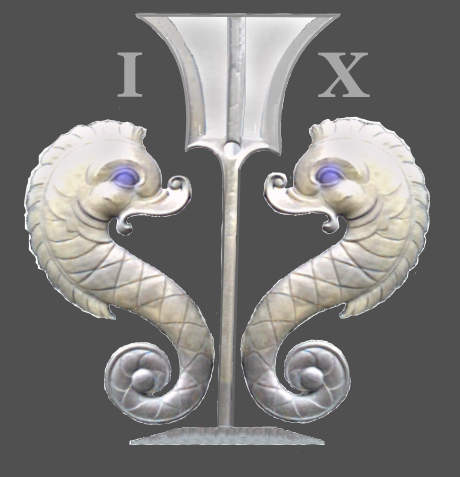


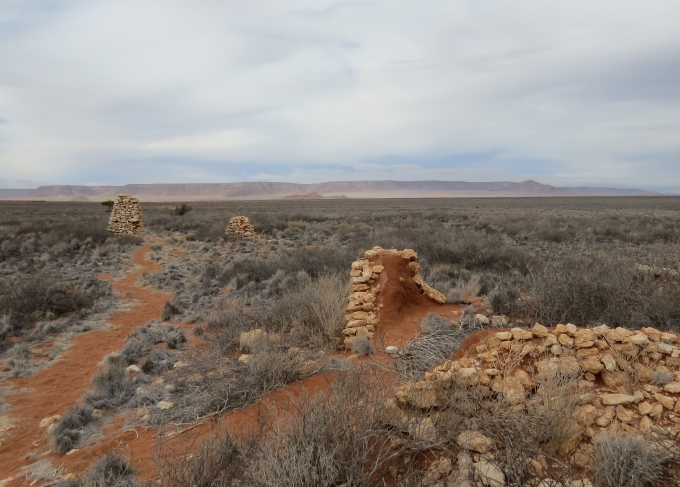
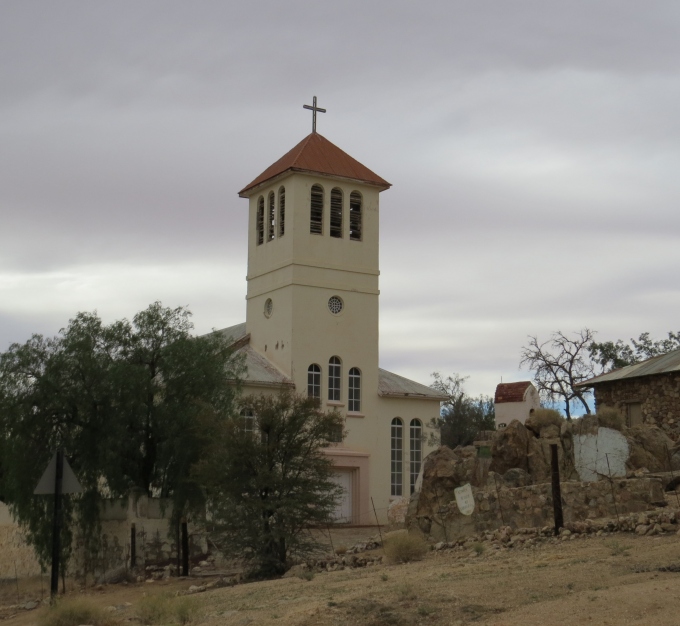

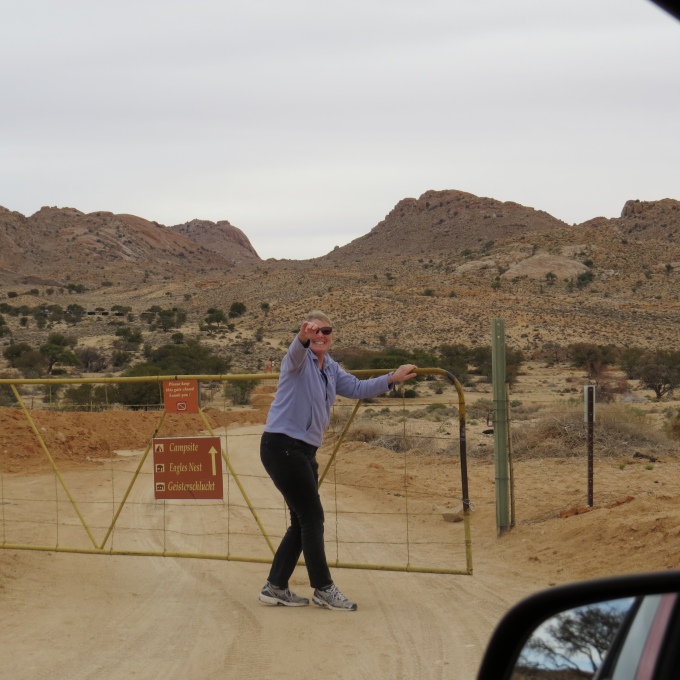

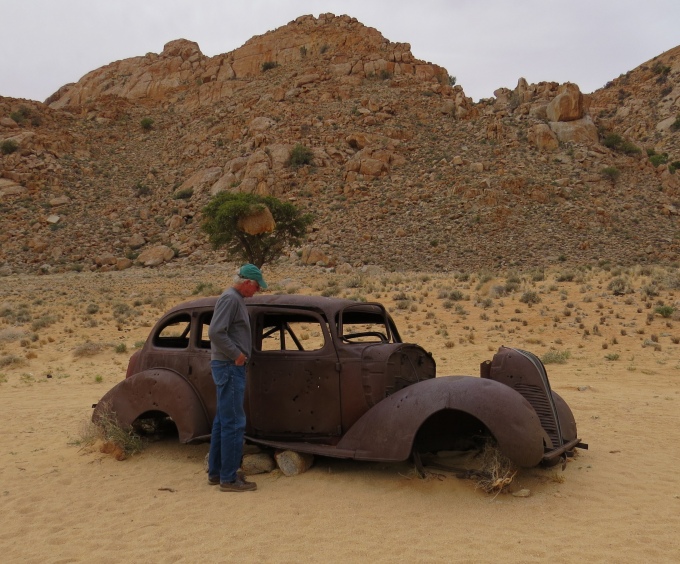

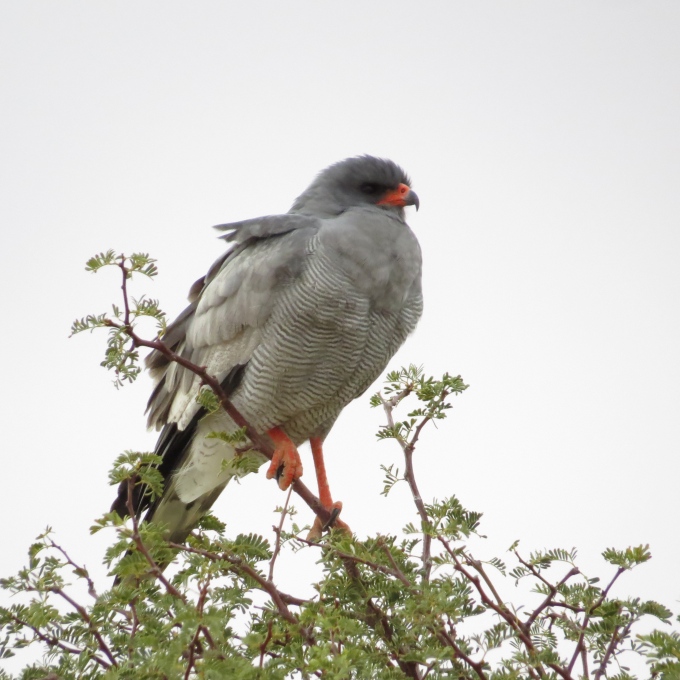

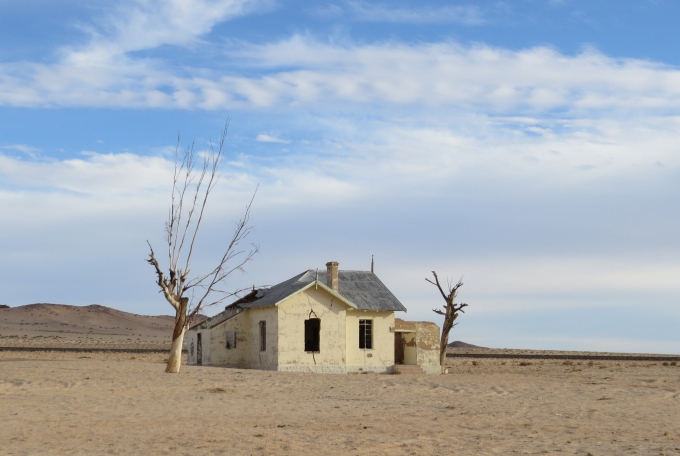


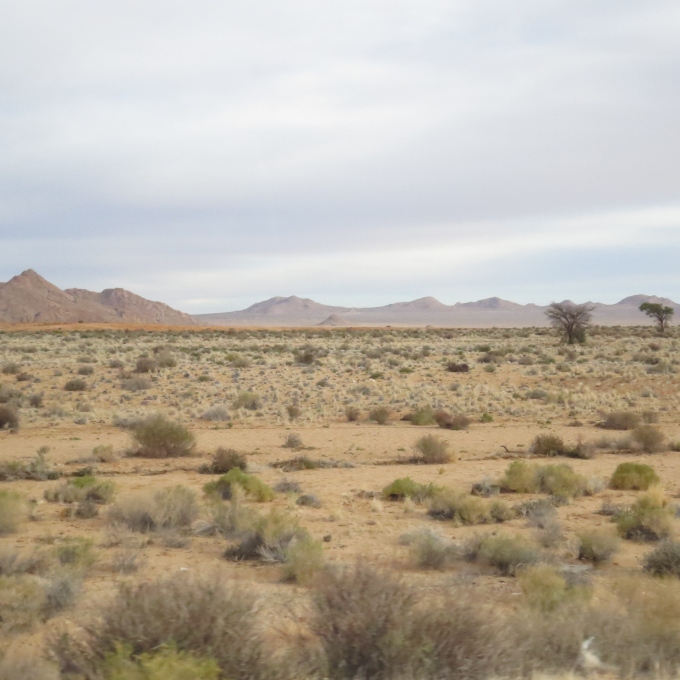
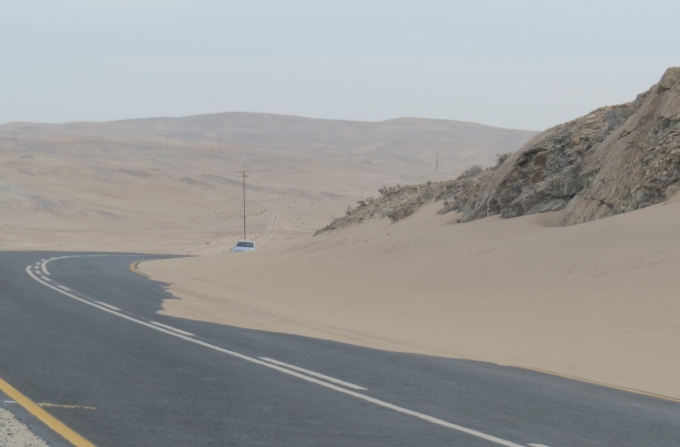
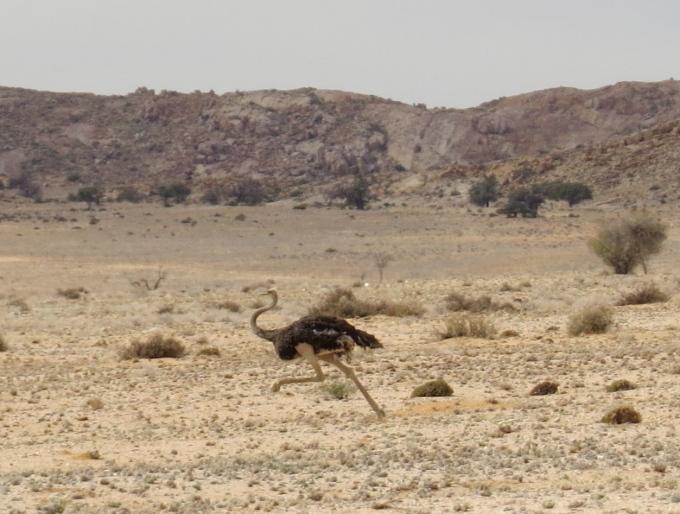
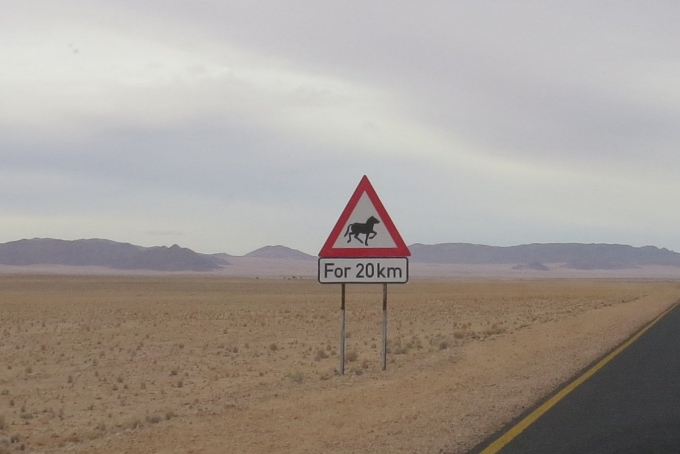





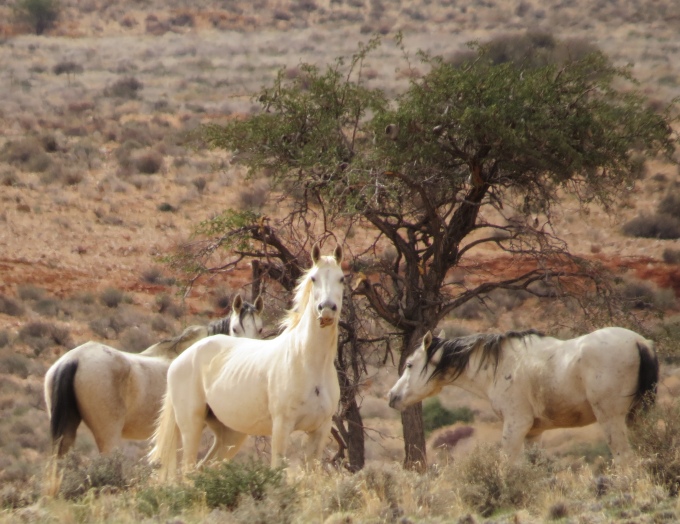
 available from Amazon.
available from Amazon.








